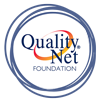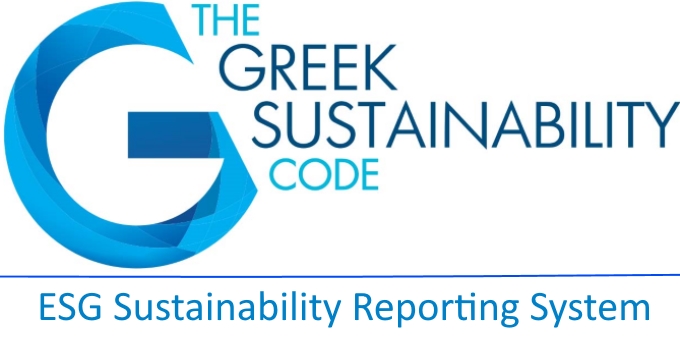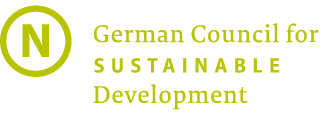ΤΑΜΕΙΟ ΑΞΙΟΠΟΙΗΣΗΣ ΙΔΙΩΤΙΚΗΣ ΠΕΡΙΟΥΣΙΑΣ ΤΟΥ ΔΗΜΟΣΙΟΥ Α.Ε.
GENERAL
ΤΑΜΕΙΟ ΑΞΙΟΠΟΙΗΣΗΣ ΙΔΙΩΤΙΚΗΣ ΠΕΡΙΟΥΣΙΑΣ ΤΟΥ ΔΗΜΟΣΙΟΥ Α.Ε.
Company Profile
Management Message

| ORGANIZATION NAME:
|
ΤΑΜΕΙΟ ΑΞΙΟΠΟΙΗΣΗΣ ΙΔΙΩΤΙΚΗΣ ΠΕΡΙΟΥΣΙΑΣ ΤΟΥ ΔΗΜΟΣΙΟΥ Α.Ε. |
| SECTOR:
|
Services |
| ORGANIZATION TYPE:
|
51-150 |
| ANNUAL TURNOVER:
|
Έως 50 εκ. ευρώ |
| COMPANY INTRO:
|
HRADF’s philosophy is to act as a strategic partner for the Greek State to attract investments, enhance the Greek economy’s growth potential, strengthen its international credibility, and produce national wealth.
The Fund is a growth multiplier. Its mission is to maximize Hellenic Republic’s revenues by developing public assets and creating added value for the Greek economy, the people, investors, the local communities, the labor market, and the environment. HRADF’s growth mission is deployed in two strategic axes: First, the focus is to maximize Hellenic Republic assets’ value and ensure the implementation of high-level procedures with transparency. Furthermore, through the Project Preparation Facility (PPF), the Fund aids in maturating and accelerating strategic high-performance projects, which are classified as part of the “Strategic Project Pipeline” (SPP) on behalf of other public sector entities.
Faithful to its’ principles of flexibility, efficiency, and the implementation of best international practices, HRADF leverages its’ extensive know-how on complex and demanding projects to strengthen the Greek economy’s competitiveness. Moreover, the Fund aims to accelerate the implementation processes and maximize the benefits of private investments in terms of economic revenues, public interest, and social welfare.
|
| CONTACT DETAILS:
|
Διεύθυνση: Καραγιώργη Σερβίας 6, 10562 Αθήνα
Τηλέφωνο: 2103274400
Email: [email protected]
|
COMFORMITY STATEMENT
ΤΑΜΕΙΟ ΑΞΙΟΠΟΙΗΣΗΣ ΙΔΙΩΤΙΚΗΣ ΠΕΡΙΟΥΣΙΑΣ ΤΟΥ ΔΗΜΟΣΙΟΥ Α.Ε.
It is a certificate which is given by the QualityNet, on the firm'sof compliance with the reference framework of the Greek Sustainability Code. Confirms the compliance level and together with the Documentation table which accompanies, presents the response range of the enterprise to the criteria of Sustainable Development and Responsible Entrepreneurship. The Declaration of Conformity can be used as a legal document as essentially shows the range of the Organisations' approach to Sustainable Development and Responsible Entrepreneurship issues. Download the Organisations' Declaration of Conformity.
STRATEGY
The criteria of this section form the basis of the Sustainability Code. The Organization answers how familiar it is with the challenges, opportunities and risks that are associated with its core activities in terms of Sustainable Development and Corporate Responsibility and which its activity should face up to. The Organization answers if it has a plan for how it wish to handle them in the medium and long term, if it sets clear goals – derived from them – to address social and environmental challenges in a proactive way and if it is already keeping an eye on its entire value chain – from the extraction of raw materials to disposal. By reporting in detail on the following four criteria, the Organization will be laying the foundation for satisfying the Sustainability Code and it will be preparing the ground so it will be able to handle all further topics well, too.
1. Strategic, Analysis & Action
ADMINISTRATIVE PRACTICES
Attached Files: There are no files
2. Materiality
ADMINISTRATIVE PRACTICES
Attached Files: There are no files
3. Objectives
ADMINISTRATIVE PRACTICES
Attached Files: There are no files
4. Management of Value Chain
ADMINISTRATIVE PRACTICES
Attached Files: There are no files
PROCEDURES
The following six criteria describe how the Organization efficiently and systematically manages Sustainable Development and Corporate Responsibility. This ranges from questions such as who is responsible and whether there are rules and processes that guide the work to whether key data exist which make any progress and developments visible. The Organization answers if there are incentives – material or non-material ones– that motivate the executives and employees to steadfastly pursue sustainable development and corporate responsibility targets, if the Organization also attends to the opinion of groups outside its activity who have identifiable interests in its development and if it is taking into consideration the demands of sustainable development and corporate responsibility when it improves products or services.
5. Responsibility
ADMINISTRATIVE PRACTICES
Attached Files: There are no files
6. Rules & Processes
ADMINISTRATIVE PRACTICES
Attached Files: There are no files
7. Monitoring
ADMINISTRATIVE PRACTICES
Attached Files: There are no files
8. Incentive and reward systems for Sustainable Development
ADMINISTRATIVE PRACTICES
Attached Files: There are no files
9. Stakeholder Engagement
ADMINISTRATIVE PRACTICES
Attached Files: There are no files
10. Product Responsibility and Innovation
ADMINISTRATIVE PRACTICES
Attached Files: There are no files
ENVIRONMENT
The questions in this section focus on the environmental aspects of Sustainable Development and Corporate responsibility. The Organization has to answer if it has a good overview of what natural resources it uses and to what extent. If he has set goals to cut this consumption and how it aims to achieve them. If it you balances its greenhouse gas emissions and if it has formulated goals for their reduction targets.
11. Usage of Natural Resources
ADMINISTRATIVE PRACTICES
Attached Files: There are no files
12. Resource Management
ADMINISTRATIVE PRACTICES
Attached Files: There are no files
13. Climate-relevant emissions
ADMINISTRATIVE PRACTICES
Attached Files: There are no files
SOCIETY
The seven criteria of this section deal with the social issues of Sustainable Development and Corporate Responsibility that are relevant to an Organization – starting with the questions about whether the Organization respects basic employment rights; how it deals with the issues of equal opportunities, health and the work-life balance; and how it helps to make and keep the workforce employable in the face of demographic changes. Aspects that are also significant are human rights in the supply chain, the role of the Organization in the region, and whether and how it tries to influence political decisions. Finally, the Organization is asked to explain what it is doing to counter the risk of bribery.
14. Employment Rights
ADMINISTRATIVE PRACTICES
Attached Files: There are no files
15. Equal Opportunities
ADMINISTRATIVE PRACTICES
Attached Files: There are no files
16. Qualifications
ADMINISTRATIVE PRACTICES
Attached Files: There are no files
17. Human Rights in the supply chain
ADMINISTRATIVE PRACTICES
Attached Files: There are no files
18. Corporate Citizenship
ADMINISTRATIVE PRACTICES
Attached Files: There are no files
19. Initiatives and Political Influence
ADMINISTRATIVE PRACTICES
Attached Files: There are no files
20. Corruption prevention and alleviation
ADMINISTRATIVE PRACTICES
Attached Files: There are no files







